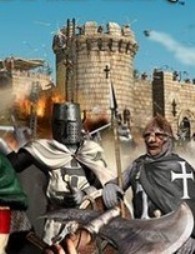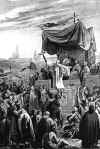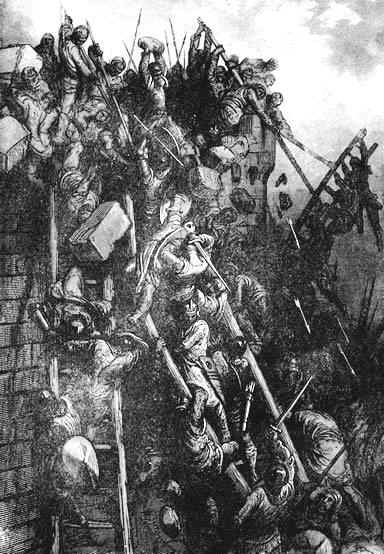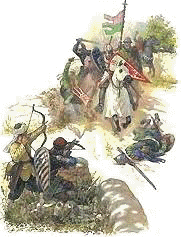back |
The
First Crusade The First Crusade had a very difficult journey getting to the Middle East. There were about 30,000 foot soldiers and 10,000 knights on horseback. They could not use the Mediterranean Sea as the Crusaders did not control the ports on the coast of the Middle East. Therefore, they had to cross land. They travelled from France through Italy, then Eastern Europe and then through what is now Turkey. They covered hundreds of miles, through scorching heat and also deep snow in the mountain passes. The Crusaders ran out of fresh water and according to a survivor of the First Crusade who wrote about his experiences after his return, some were reduced to drinking their own urine, drinking animal blood or water that had been in sewage. Food was bought from local people but at very expensive prices. |
|||||
|
||||||
By 1097, nearly 10,000 people had gathered at Constantinople ready
for the journey to the Holy Land.
|
 |
A monk called Fulcher was on the First
Crusade. He wrote about the attack on the Holy City and he can be
treated as an eye-witness as to what took place. The slaughter continued and the Crusaders
"killed whoever they wished". Those Muslims who had their
lives spared, had to go round and collect the bodies before dumping
them outside of the city because they stank so much. The Muslims
claimed afterwards that 70,000 people were killed and that the
Crusaders took whatever treasure they could from the Dome of the
Rock. |
|
||||
| The
Second Crusade The crusaders built strong castles in the Middle East, that seemed safe from attack; And although Jerusalem remained safe during this time, in 1144 a combined Arab and Turkish army did rise up and attack and capture the city of Edessa (see map below). The Pope reacted by ordering Bernard of Clairvaux (in France) to preach a second  crusade to take Edessa back and return its control to the
Christians.
crusade to take Edessa back and return its control to the
Christians.The young king of France, Louis VII, agreed to go, along with queen Eleanor of Aquitaine. So did Conrad III of Germany, the Holy Roman Emperor. At this time Louis was 23 years old and Eleanor was 22. But this second crusade was a failure. Most of Conrad's soldiers were killed as they marched through Turkey. The Crusaders then decided to attack the Muslim controlled city of Damascus instead of Edessa, but the attack failed. The kings and queens went home defeated. Despite this defeat, the Crusaders still retained control of many cities in the Middle east and Jerusalem.
However, in the 1180ís the Arabs found a new, strong leader, Saladin, who wiped out the crusaders main army at the Battle of Hattin 1187. Soon the crusaders had almost been pushed into the sea. |
 (click to enlarge) Bernard preaching
|
|||
 |
|
Saladin was a great Muslim
leader. His real name was Salah al-Din Yusuf. He united and lead the
Muslim world and in 1187, he recaptured Jerusalem for the Muslims after
defeating the King of Jerusalem at the Battle of Hattin near the Lake of
Galilee. When his soldiers entered the city of Jerusalem, they were
not allowed to kill civilians, rob people or damage the city. The
more successful Saladin was, the more he was seen by the Muslims as
being their natural leader.
|
|
|
Continue
on
The Third Crusade  |










